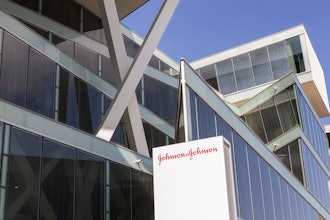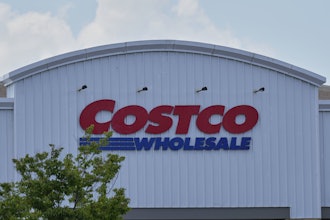"The brush," says Smith, "performs a combing action designed to maintain single-layer flow through scanning and defect-removal stations. Installing the nylon-bristled cylinder around the outer diameter (OD) of the pulley shell allows us to meet height adjustment provisions and simplify cleaning and sanitation concerns by eliminating external drive system components."
Key first used the motorized pulley on its premier ADR® 1 unit in 1981. "There are still seven of these units in operation," says Smith, adding that the company is not aware of a single failure attributed to the pulleys. The pulleys are part of the JOKI line, manufactured by Interroll Corp., Wilmington, N.C.
The ADR® System is considered the top choice of french-fry processors worldwide. The ADR® 4 has a patented alignment, handling and cutting system that nearly eliminates manual trimming and inspection of potatoes, while improving product throughput and recovery. The system assures that all product is singulated, aligned, scanned and trimmed with precision, eliminating the miscuts, partial cuts and over cuts, common with manual methods.
In the ADR® 4, defects are detected via two high-resolution trichromatic image sensors. Infrared technology allows the machine to determine if the presence of peel on a potato is acceptable or not. Potato strips move past the cameras on a patented belt conveyor that aligns potato strips.
In order for the cameras to accurately identify defects, potato strips must enter the scanning area properly positioned on the alignment conveyor belts. Each belt consists of 28 inspection channels formed from the custom belting. A vibration shaker that loads the product on the belts in an evenly distributed manner provides preliminary alignment of cut potatoes. To avoid barren areas on the belts and to maximize operating capacity, the shaker always slightly overloads the belts. The belts then carry the strips through free-rotating steel discs, which align them in the belt-inspection channels.
The two 12-in.-diameter nylon leveler brushes, mounted on a self-contained motorized pulley, gently brush back unaligned or double pieces, thereby permitting only a single-layer of strips to enter the scanning area. The 12-in. leveler brushes operate at approximately 84 rpm, which is compatible with the belt speed of 380 ft./min.
When a defect is identified in the scanning area, electrical impulses are transmitted to a rotary cutterwheel, where pneumatic-activated knives trim identified defects from individual strips and cut overlength strips in half. Each cutter head features 1,680 individual nylon knives, as well as a low-maintenance; self-contained CIP (clean-in-place) system to flush accumulated potato debris and prevents starch build-up. All pieces then pass over a length-size grader where the defects and pieces up to 1/2-inch long fall through small holes and are removed from the batch.
"With the product alignment belts operating at 200 ft/min, one ADR,reg> can process approximately 18,000 lbs. of 3/8-in. cut potatoes per hour with less waste and a much higher rate of efficiency than the conventional method," says Smith. "We estimate that on labor alone, one machine can save up to $500,000/year." p> He explains that a critical hurdle in the design of the original machine was the drive mechanism for the nylon leveler brush.
"Due to its application, it had to be sanitary, self-contained, height-adjustable and compact. These requirements ruled out the standard pulley with external drive arrangement used in other applications."
The Interroll motorized pulley, he says, solved these problems. Key components of the unit are a heavy-duty motor, gearbox, and two shafts joined together to form a rigid shaft around which the shell rotates. Torque is transferred from the motor through a multiple-step gear-reduction unit to a final gear wheel or rim.
Additionally, all internal components are immersed in an oil bath that lubricates and cools. Double-lipped oil seals at either end of the drum prevent oil leakage while excluding dust and moisture. Power leads pass from the motor through the hollow shaft to the terminal box. The pulleys come crowned, which helps eliminate belt tracking problems. Motor and gearing is housed inside the pulley shell.
According to Interroll, the internally powered pulleys are up to 35% more efficient than conventional, "multi-component" drive systems. As a result, the fully-rated horsepower of the drive is available at the pulley surface. And, says Smith, "The units are quiet and reliable. No motorized pulley failures have been experienced, and these systems operate in excess of 320 days per year."
Interroll Corp., 3000 Corporate Drive, Wilmington, NC 28405; 800-362-9616.


















